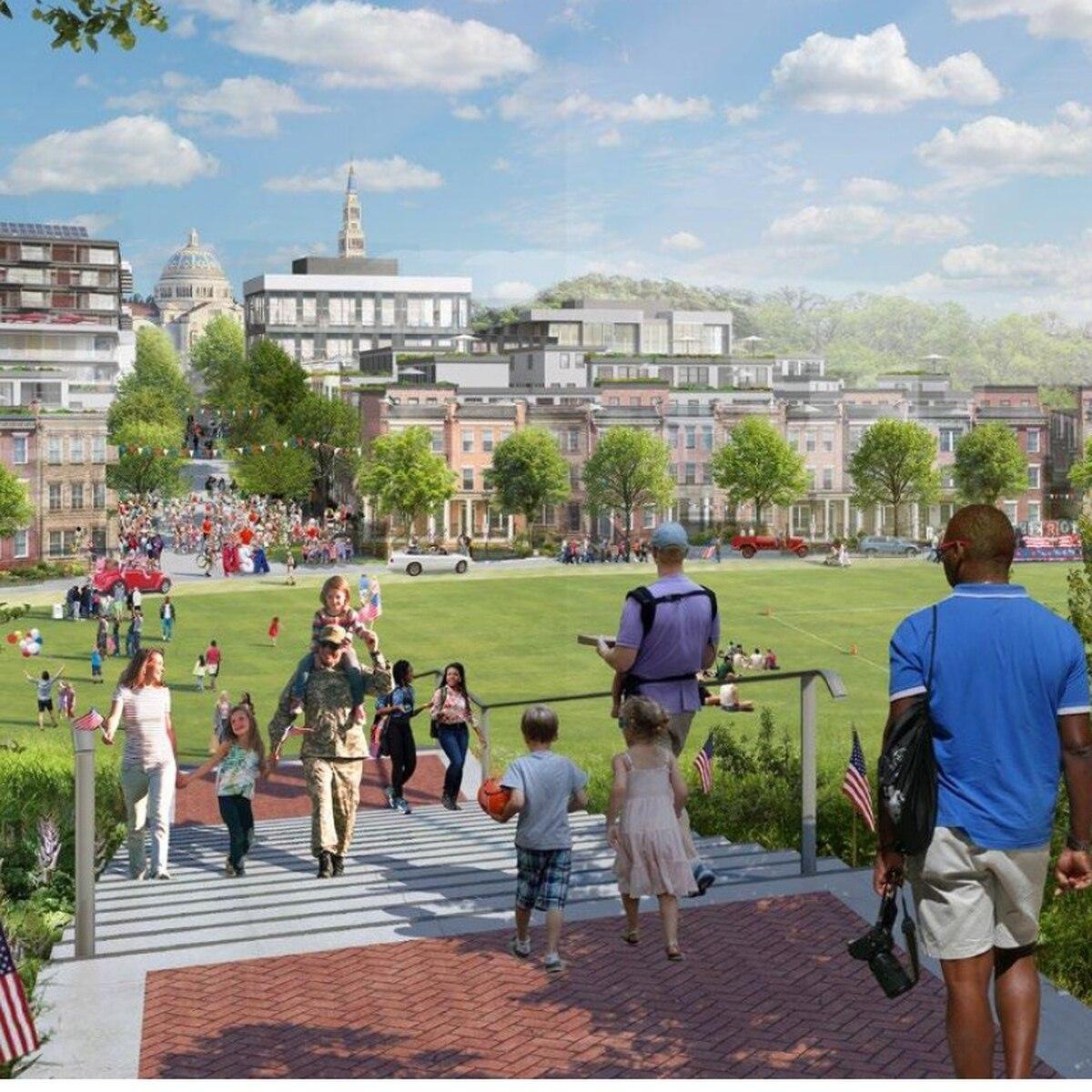
Residents of the AFRH campuses, based in Washington and in Gulfport, Mississippi, are retired or certain former enlisted members. In addition to resident fees, part of AFRH’s funding currently comes from the 50-cent-a-month deduction from active-duty enlisted service members’ paychecks, and fines imposed on enlisted members for disciplinary violations.
Officials describe the step as a “provisional” selection, as negotiations will begin on a variety of issues. The project involves a long-term ground lease involving 80 acres of the 272-acre property. While a timeline is not firm, once the lease is signed, the project will be phased in over more than a decade, said AFRH spokesman Chris Kelly.
The home will retain ownership of the land.
The team of two firms, Madison Marquette and Urban Atlantic, proposed about 4.3 million square feet of new development and adaptive reuse of historic buildings including the power plant and hospital complex.
Their plan is consistent with AFRH’s vision, officials said, and includes residential, retail, art spaces, sports and wellness venues, as well as adaptive reuse of several historic buildings. It will open up parts of the AFRH campus to the public, including almost 20 acres of green space and pedestrian and bicycle paths.
Officials declined to discuss how much AFRH expects to receive from the developer, citing negotiations underway. However, in testimony before Congress earlier this year, AFRH’s Chief Executive Officer Stephen T. Rippe, a retired Army major general, said the project will ultimately provide AFRH with millions of dollars in lease payments each year, and restored property worth hundreds of millions.
The two AFRH campuses have capacity for a combined 1,100 residents. It’s the nation’s oldest continually operating retirement home for enlisted military personnel. The Washington campus has 276 residents currently, with the capacity for 555.
The Washington campus has 35 buildings with more than 4 million square feet of space, on the southeast part of the property, which are part of the proposal. That campus is listed on the National Register of Historic Places as a historic district. Among those buildings is the historic hospital complex, built in the early 1900s.
The golf course is not part of the 80-acre development, and remains open to the public through associate membership fees, Kelly said.